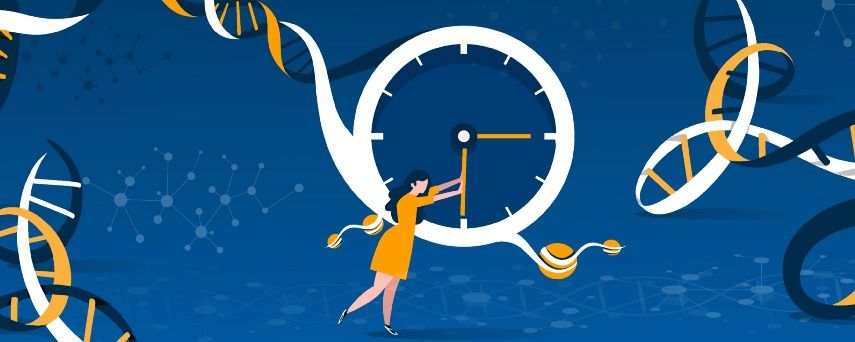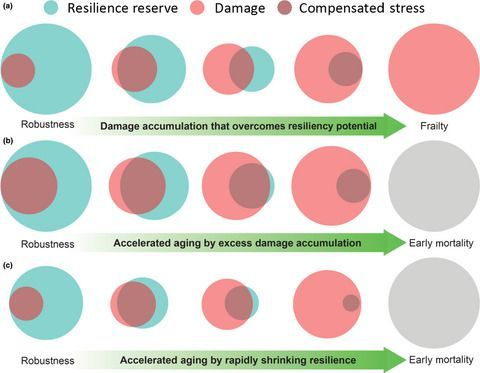Even the best science imaginable has its limits.



A year marked by climate protests, political uncertainty and debate over the ethics of gene editing in human embryos proved challenging for science. But researchers also celebrated some exciting firsts — a quantum computer that can outperform its classical counterparts, a photo of a black hole and samples gathered from an asteroid.
Climate strikes, marsquakes and gaming AIs are among the year’s top stories.

Article courtesy of Dr. Nicholas DiNubile, Vice President of the A4M, an orthopedic surgeon specializing in sports medicine, best selling author, keynote speaker, and one of our medical editors who is dedicated to keeping you healthy in body, mind and spirit.
We’ve extended the warranty on the human heart, and people are living longer. We’ve improved care for skin, and people look better. But it’s your frame that gets you where you need to go whenever you need to get there. Without the proper care, your bones and joints can all too easily become the limiting factor in your enjoyment of life. Have you outlived the warranty on your frame? Would you like an extended warranty?
I have come to believe that the achievement of longevity will bring the challenge of durability to the forefront of modern healthcare.

According to a study published in the European Journal of Preventive Cardiology brushing your teeth frequently is linked to a lower risk of atrial fibrillation and heart failure.
Poor oral hygiene leads to bacteria in the blood which causes inflammation in the body based on previous research; inflammation increases the risk of atrial fibrillation and heart failure and this study examined the connection between oral hygiene and occurrence of these conditions.
161,286 participants between the ages of 40–79 with no history of heart failure or atrial fibrillation who were part of the Korean National Health Insurance System were enrolled in this study; participants had a routine medical exam between 2003–2004 and information on weight, height, lifestyle, illnesses, lab tests, oral health, and oral hygiene behaviors was collected.

Blueberries are more than just delicious, these little functional foods have been subject to many studies, and now they have been found to have another beneficial ability attributed to their antioxidant rich portfolio, that is the ability to help reduce the risk of heart disease according to a study published in The American Journal of Clinical Nutrition.
This study found that daily consumption one one cup of blueberries over the course of six months resulted in improved arterial function and cholesterol levels in adults with metabolic syndrome. 138 overweight and obese adults aged 50+ with metabolic syndrome were involved in the double blinded and placebo controlled parallel study.
Metabolic syndrome is a term for a cluster of conditions that includes high blood sugar, high triglycerides, and high blood pressure as well as increasing the risk of developing heart disease and Type 2 diabetes.

Full Zoom video of Seeking Delphi™ host Mark Sackler’s interview with Strangeworks CEO, whurley, on the current state of the art in quantum computing.

Progress in research is not linear. Periods characterized by rates of incremental knowledge are interlaced with “eureka” moments as milestone discoveries suddenly open new possibilities that thrust research and knowledge to a higher level. Galileo’s use of the telescope to explore the stars, Kary Mullis’s description of polymerase chain reaction, and Edwin Hubble’s demonstration that the universe is expanding are just few examples of these moments. The field of aging research is living one of those magical moments. Finding a reference metric for the rate of biological aging is key to understanding the molecular nature of the aging process. Defining and validating this metric in humans opens the door to a new kind of medicine that will overcome the limitation of current disease definitions, approaching health in a global perspective and bringing life course preventative measures to the center of attention.
John Giannandrea, Vice President of Engineering with responsibility for Google’s Computer Science Research and Machine Intelligence groups; leading teams in Machine Learning, Machine Intelligence, Computer Perception, Natural Language Understanding, and Quantum Computing, “I’m definitely not worried about the AI apocalypse, I just object to the hype and soundbites that some people are making” said at the TechCrunch Disrupt conference in San Francisco.
Google’s John Giannandrea sits down with Frederic Lardinois to discuss the AI hype/worry cycle and the importance, limitations, and acceleration of machine learning.